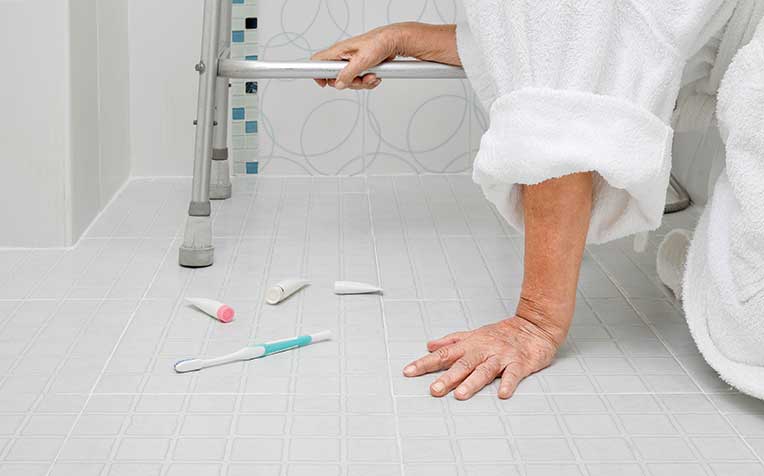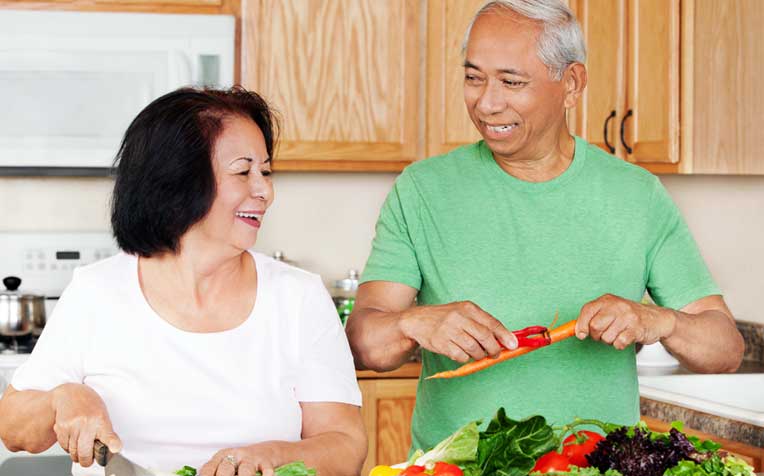
Falls in the elderly occur one in every three persons aged 65 and above yearly. Furthermore, if a person experienced a fall, he or she is likely to fall again.
Falls are common among the elderly. One in every three persons aged 65 years and above fall each year. And once a person has had a fall, he or she is more likely to fall again.
Falls often lead to injuries, some of which are serious and require hospitalisation. Injurious falls are the leading cause of accident-related deaths among older people. Many who have fallen previously also develop a fear of falling. As a result of this fear, they lose their self-confidence, avoid both physical and social activities, and become less independent. Around one in 10 older people are afraid to leave their homes in case they fall again.
Older people fall for different reasons. In many cases, it is not just one but a combination of several risk factors that leads to falls. These factors, which can be classified into a few broad categories, affect balance and walking ability.
The Geriatric Medicine Centre at Changi General Hospital (CGH), a member of the SingHealth group, highlights common risk factors and what you can do to lower your risk of falling.
Common causes of falls and how to prevent
1. Medical conditions
A fall may be a sign of a serious medical condition that needs treatment. You may be weaker if you have an acute condition like an infection or dehydration.
Dementia or cognitive impairment can compromise your judgement and affect your ability to recognise hazards and risky situations, leading to an increased risk of falling. Nerve damage from diabetes causes numbness in the feet and makes it difficult for you to sense environmental hazards and get around safely.
If you have a heart condition or are taking medication for controlling blood pressure, you may experience a drop in blood pressure when you change positions, and feel giddy, near-faint and even lose consciousness.
Fall prevention tip:
You may lower your chance of falling if you take good care of your overall health and comply with medical reviews and medications.

2. Medication side effects
The older you are, the more likely you are taking multiple medications. Some medications can cause side effects such as drowsiness, dizziness, unsteadiness and blurred vision, which can increase your risk of falling. These medications include drugs for lowering blood pressure, diuretics, sedatives and psychotropics, which are usually prescribed for mood conditions.
Fall prevention tip:
Side effects vary from person to person. It is advisable to have your doctor review all your medications, including over-the-counter and traditional ones.

3. Poor vision
Impaired vision increases the risk of falling. Eye problems make it difficult for you to spot hazards and navigate uneven ground. Common eye conditions like glaucoma, cataracts and age-related deterioration in depth perception, and sensitivity to changes in lighting, can contribute to falls.
Fall prevention tip:
Cataract surgery may help improve your vision. If you wear glasses, make sure your prescription is current. Be careful with bifocals as they can impair stepping and foot placement, especially when you are walking on uneven surfaces and negotiating obstacles. Do have your eyes checked at least once a year by an eye doctor or an optometrist.

4. Lack of exercise
Exercise is the most effective way to build muscle strength, balance and endurance. Chronic problems like pain and dizziness may make it more difficult for you to exercise. However, the longer you are inactive, the more your muscles deteriorate and become weaker. Your joints tend to ache more too. When these conditions happen, exercise becomes even more challenging. In addition, staying indoors reduces your exposure to sunshine. This means that your body produces less vitamin D, which is needed to keep your bones strong.
Fall prevention tip:
Speak to your doctor and/or a physiotherapist about a recommended exercise programme before you embark on one. The programme should be tailored for you, taking into account your underlying medical conditions.

5. Environmental hazards
Evironmental risk factors refer to hazards found at home and in public places. These hazards include uneven surfaces, the lack of hand or grab rails, poor lighting, loose rugs and slippery floors. Falls tend to happen when you fail to notice a hazard or do not respond quickly enough when you spot one.
Fall prevention tip:
A walking aid may help you move around safely. Your physiotherapist can assess your needs, recommend an appropriate aid and teach you how to use it. If you tend to fall at home, have your doctor arrange for a home environment review by an occupational therapist.

6. Footwear choice
The shape of our feet can change as we age. Problems such as bunions and thick nails, in addition to poorfitting footwear like high heels and backless shoes, can cause pain and discomfort, and increase your risk of falling.
Fall prevention tip:
Wear footwear that fits well and comfortably. If the top of your foot is swollen, avoid covered shoes, which may cause abrasions and blisters. Sports sandals can be considered instead.

Read on to learn what to do and how to get up from a fall.
Ref: N18
Preventing falls when taking public transport
The LTA (Land Transport Authority) shares the ABCs on how to stay safe and upright when at train stations and at bus interchanges!
 |
 |
 |
Alert and steady: Hold the handrail The escalator handrail is free to hold - so hold tight for a safe ride. Stay alert and put away mobile devices whenever you're on the move. |
Bulky items or feeling unwell? Use the lift Got your hands full or feeling under the weather? The lift is there for you! Not only is it easier to navigate, it also keeps escalators clear for everyone else to use. |
Calm down! Do not rush on escalators We know it’s sayang to miss a train, but please don’t rush on escalators to catch a train. Take it easy - another train will arrive in just a few minutes. Better to reach your destination a bit later than not at all! |
Here are more SAFETY tips on how you and your loved ones can stay safe when travelling on moving buses and trains!
 |
Stay on the lower deck The lower deck is the best spot in the bus! No stairs to climb and you’ll be closer to the exit when it’s time to hop off at your stop. |
 |
Ask for a seat if you need it No need to be paiseh (shy) – sitting down is safer for seniors. Take it easy and let someone give up their seat for you. |
 |
Firmly hold on to handrails Buses can sometimes brake suddenly to avoid a collision. Always hold tight to the handrails and grab poles when standing or while moving towards an empty seat. |
 |
Enter and exit carefully Take it slow and mind your step! |
 |
Travel light for a smooth ride Avoid carrying too many things when travelling on buses and MRT. Travelling light makes it easier for you to hold on to handrails and keep steady throughout your journey. A smooth ride starts with a light load. |
 |
You are in control! Take your time and follow these safety tips for a safe, smooth and steady ride. You’ve got this! |
If you need help at the MRT station or bus interchange, simply approach the station/interchange staff at Passenger Service Centres for assistance.
For more articles from LTA, visit LTA CONNECT.
Contributed by

















 Get it on Google Play
Get it on Google Play